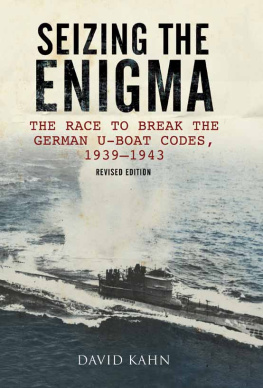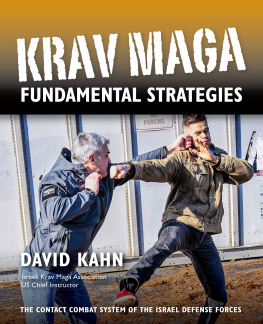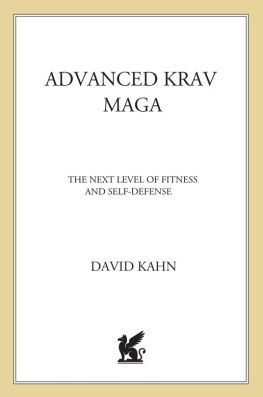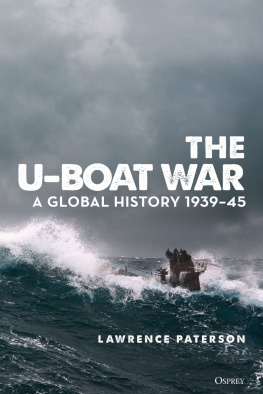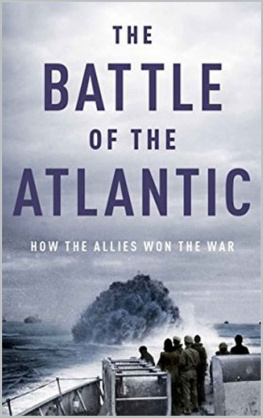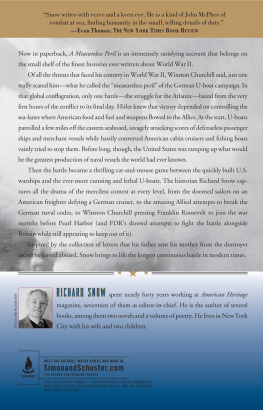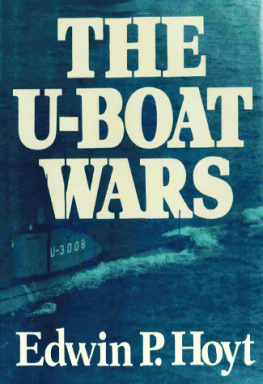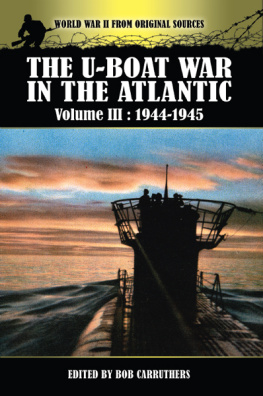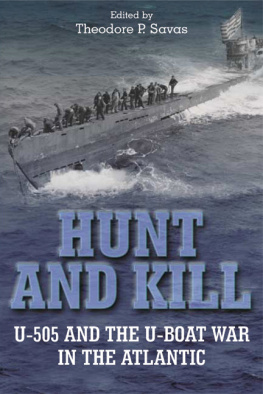Frontline Books, London
NAVAL INSTITUTE PRESS
Annapolis, Maryland
First published in 1991 by Houghton Mifflin Company of Boston, Massachusetts.
Second edition published in 1998 by Barnes & Noble of New York
This edition published in 2012 by Frontline Books,
an imprint of
Pen & Sword Books Ltd.,
47 Church Street, Barnsley, S. Yorkshire, S70 2AS.
Visit us at www.frontline-books.com, email info@frontline-books.com or write to us
at the above address.
Published and distributed in the United States and Canada by
the Naval Institute Press, 291 Wood Road, Annapolis, Maryland 21402-5034
www.nip.org
For a free illustrated catalog describing hundreds of books on naval and maritime subjects,
please contact: Customer Service, Naval Institute Press
Toll-free telephone: 800-233-8764
Fax: 410-571-1703
www.nip.org
Copyright David Kahn 1991, 1998
The right of David Kahn to be identified as the author of this work has been asserted by him
in accordance with the Copyrights, Designs and Patents Act 1988.
UK edition: ISBN 978-1-84832-636-1
US edition: ISBN 978-1-59114-807-4
No part of this publication may be reproduced, stored in or introduced into a retrieval
system, or transmitted, in any form, or by any means (electronic, mechanical, photocopying,
recording or otherwise) without the prior written permission of the publisher. Any person
who does any unauthorized act in relation to this publication may be liable to
criminal prosecution and civil claims for damages.
CIP data records for this title are available from the
British Library and the Library of Congress.
Library of Congress Control Number: 2011939392
Printed and bound by
CPI Group (UK) Ltd, Croydon, CR0 4YY
CONTENTS
THIS BOOK RECOUNTS THE SECRET HISTORY OF WORLD WAR IIs Battle of the Atlantic. It exposes the chief hidden factor that helped the Allies win it: they intercepted, solved, and read the coded radio messages between Admiral Karl Dnitz, Hitlers commander of submarines, and his U-boats at sea. The solutions gave the British and Americans intelligence about the locations and movements of the U-boats, enabling the Allies to divert their convoys around wolfpacks and to sink subs. This was of fundamental importance because whoever won the Battle of the Atlantic would win the war. The struggle between Allied ships bringing supplies to Britain and German submarines seeking to sever that lifeline was the longest battle of the greatest war of all time, beginning on its first day and ending on its last. Winston Churchill has evoked its significance in words that, though familiar, still ring with high drama:
The Battle of the Atlantic was the dominating factor all throughout the war. Never for one moment could we forget that everything happening elsewhere, on land, at sea, or in the air, depended ultimately on its outcome, and amid all other cares, we viewed its changing fortunes day by day with hope or apprehension.
Amid the torrent of violent events one anxiety reigned supreme. Battles might be won or lost, enterprises might succeed or miscarry, territories might be gained or quitted, but dominating all our power to carry on the war, or even keep ourselves alive, lay our mastery of the ocean routes and the free approach and entry to our ports.
The Germans used a cipher machine called the Enigma to put messages into secret form. Contrary to popular opinion formed since the 1974 publication of Group Captain F. W. Winterbothams The Ultra Secret, however, the Enigma used by the German navyunlike that used by the air forcegenerally withstood British codebreaking for the first two years of the war. It was not until the British captured key documents from German warships that they were able to break the naval Enigma continuously. This book tells, for the first time, the story of those seizures and the role they played in helping win the Battle of the Atlantic.
The book differs in several other ways from earlier accounts of the Enigma. It depicts the codebreakers, especially those working on the naval Enigma, behind their closed doors and relates case histories of the role of the decodes in the defeat of the U-boats. It focuses upon personalities and rests as much as possible upon primary sources, namely documents and interviews. It shows how much of a near-run thing the cryptologic battle was and seeks to explain why the Allies won it. Finally, it weighs the effect of codebreaking on the war at sea.
I believe that this book tells an essentially complete story of the failures and successes of British codebreaking, thanks in large part to the magisterial history of British intelligence in World War II by Sir Harry Hinsley and his coauthors. Those three volumes are based upon primary sources and upon Hinsleys own wartime experiences evaluating German naval intercepts. In some areas, such as the circuitry and mechanism of the cryptanalytic testing machines called bombes, my descriptions are based on interviews and reconstructions. This and other portions of my text dealing with technical matters are not intended to provide detailed instruction in Enigma cryptanalysis, though they give, I hope, enough information for readers who wish to pursue the matter to carry through their own analyses. This material may seem dry, but to leave it out would obscure a main point of the book: the fearful difficulty of the work of the cryptanalysts, which could not succeed without outside help.
As much as possible, I have used cryptologically precise terminology. Thus I distinguish between codes (which, to oversimplify, work by words) and ciphers (which work by letters). I usually write encipher in connection with ciphers and encode with codes. But sometimes, for simplicity or rhythm or sound, I use code and its derivatives when cipher or even key (a setting of the wheels or plugs of the Enigma, for example) would be correct: codes in the subtitle, which stands for keys, is an instance.
Among the many people who helped with this book I should like to thank first of all Tom Congdon, who has believed in it for many years and whose tough but sensitive editing improved the text. Robie Macauley of Houghton Mifflin had enough faith in the idea to contract for it. My agent, Max Becker, provided valuable moral support. John Sterling of Houghton Mifflin handled the publishing with energy and flair. Peg Anderson of that house did not a good, but a great job of copyediting, tightening and rearranging the text and suggesting improvements.
Others helped with the substance. Sir Harry Hinsley patiently answered torrents of questions. Dr. Jurgen Rhwer steered me right on the Battle of the Atlantic. Ralph Erskine generously shared his expertise on the naval Enigma. Dr. Cipher Deavours made complex cryptanalyses plain. Carl Ellison helped in this as well. Christine Kelly located many retired Royal Navy officers and men. My researchers Alexander Lesnoff-Caravaglia and Mary Z. Pain came up with what I needed in the Public Record Office. Ilan Berkner computed times of solution for messages. Franz Selinger provided names and addresses of crew members of the German weather ships. The late Patrick Beesly furnished information and encouragement.
Archivists and historians who greatly helped included John Taylor, Harry Rilley, Tim Mulligan, Bill Cunliffe, and Bob Wolfe at the National Archives, Dr. Dean Allard, Bernard Cavalcante, and Kathleen Lloyd at the U.S. Navys Operational Archives, Dr. Hansjoseph Maierhofer and Dr. Manfred Kehrig at the Militrarchiv, and David Brown at the Naval Historical Branch of the Ministry of Defence.

